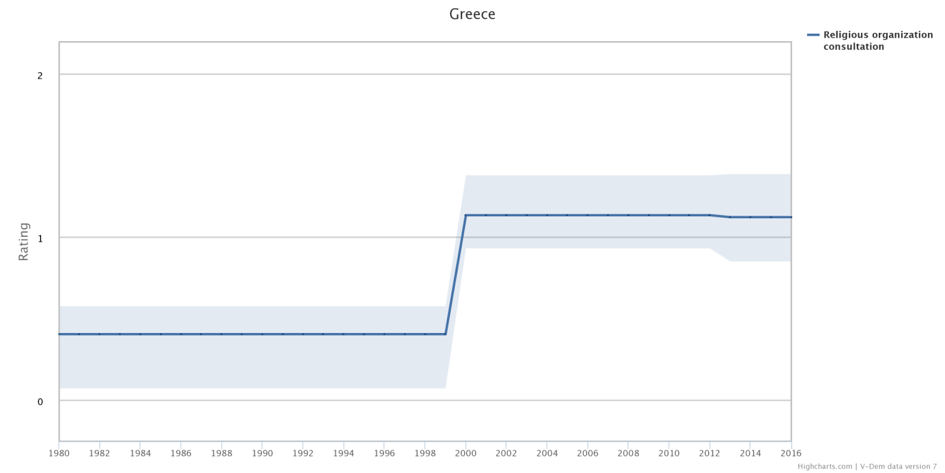The influence of religious organizations in Greece
By: V-Dem Staff
Feb 07, 2018
On January 21, around 90,000 people flocked around the White Tower in Thessaloniki, Greece’s second largest city, to protest against a 25-year dispute: the addition of “Macedonia” to the name of the Former Yugoslav neighboring country. Attendance was just a fraction of that in 1992, when around a million people gathered in Thessaloniki to protest the name change. At that time, demonstrations were backed by the Greek Orthodox Church, and although some radical clerics attended the rally on Sunday, this time the Church decided to distance itself from the demonstration.
This week’s graph compares the influence of religious organizations on policy-making in Greece. V-Dem’s indicator on religious organization consultation contemplates whether policymakers routinely consult major religious organizations. Starting from zero, the recognition of religious organizations as stakeholders in important policy areas increases with higher values.
The close relationship between the Greek Orthodox Church and the Greek state emerges already in the country’s first three constitutions. The rise of Christodoulos in 1998, head of the Greek Church, coincides with a period of heavy politicization of the Church’s discourse. During this period, consultation increased sharply, pointing to the strengthening of the Church as a political actor with its own agenda. The organization managed to maintain its influence over policy-making until present days, as it can be noted from the graph.
If you want to learn more about religious organization consultation in Europe, use our online analysis tools at v-dem.net.


